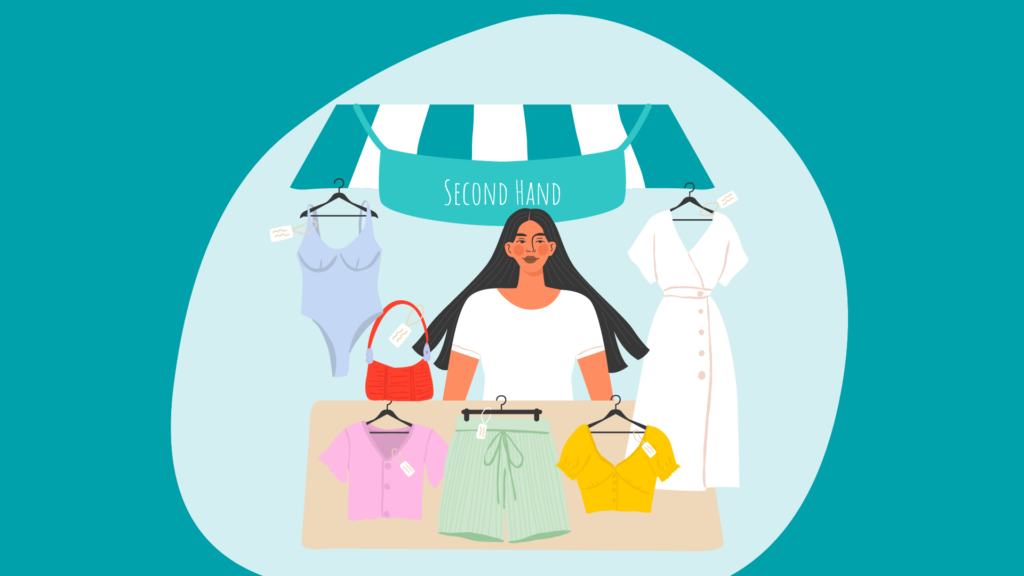In an increasingly environmentally conscious world, second-hand is emerging as a key player in redefining the fashion industry. From treasure hunting for vintage finds to dedicated online platforms, the second-hand market has significantly evolved, reshaping not only our wardrobes but also our perception of fashion. In this article, let’s explore how second-hand influences fashion and contributes to shaping a more sustainable future.

Sustainable Fashion, the New Trend
Sustainable fashion has emerged as a new must-have trend, embodying a profound change in the industry. More and more consumers are seeking environmentally friendly alternatives, questioning traditional clothing production practices. This evolution marks a significant shift towards ethical and sustainable choices, where quality takes precedence over quantity. Brands are adopting responsible practices, prioritizing eco-friendly materials, ethical manufacturing processes, and increased transparency throughout the supply chain. Sustainable fashion thus reflects a growing collective consciousness, where style and social responsibility converge to redefine contemporary aesthetics. As this trend gains popularity, it helps forge a more ethical fashion industry, highlighting the increasing importance of consuming thoughtfully and environmentally friendly.
Online Platforms and the Circular Economy
Online platforms play a crucial role in promoting the circular economy, providing a dynamic digital platform where goods can be exchanged, shared, or recycled. These platforms create a virtual space where individuals can buy and sell second-hand products, thus extending the life of items and reducing waste. Furthermore, they facilitate access to rental services, encouraging more sustainable consumption by allowing users to enjoy goods without necessarily owning them. The circular economy, fostered by these platforms, is based on the principles of reuse, repair, and recycling, thereby helping to mitigate the environmental impact of overconsumption. These online initiatives also stimulate innovation, encourage collaboration among consumers, and promote a more responsible lifestyle, underscoring the transformative potential of digital platforms in the transition to a more circular economy.
Fashion as a Means of Individual Expression
Second-hand fashion transcends its traditional role as a mere commercial transaction to become a powerful means of individual expression. By opting for second-hand pieces, individuals create unique looks that reflect their personal style while reducing their ecological footprint. Hunting for vintage or second-hand clothing allows exploration of diverse styles, reinterpretation of past trends, and the composition of outfits that stand out from mass production. Second-hand fashion thus offers a creative avenue to assert one’s identity, escape conventional norms, and embrace uniqueness. In addition to fostering a more sustainable approach to fashion, it becomes an authentic way for individuals to assert their originality, participate in a circular economy, and reinvent how society views clothing consumption.
Challenges and Opportunities for the Fashion Industry
As second-hand continues to gain traction in the fashion landscape, the industry faces increasingly complex challenges, including counterfeiting and growing competition. The proliferation of counterfeit products on second-hand platforms poses a potential risk to brand integrity and consumer trust. This threat demands increased vigilance from industry players, including collaborations with second-hand sales platforms to enhance verification and certification measures.
Brands can also explore initiatives such as selling refurbished or recycled products, demonstrating their commitment to waste reduction and promoting responsible consumption. This approach not only enhances brand credibility but also gives them a competitive advantage in an increasingly sustainability-focused market. Take our partner, le-1.store, for example. What’s their added value? They repair the clothing you purchased from their store for free! This ensures a product lifespan of several years.
Size Recommendation in Second-Hand Fashion
Size recommendation in the context of second-hand fashion is particularly important, given the inherent variability of pre-owned clothing. Unlike purchasing new clothing in-store, where standardized sizes are generally more reliable, the tool Fitle can be a real asset. Indeed, to make a recommendation, we only need the size guide or a tester panel. Our technology would enhance the customer shopping experience by avoiding the difficulties of size selection. Additionally, it will allow e-commerce merchants to improve their conversion rates while also reducing return rates.
In conclusion, while second-hand brings its share of challenges to the fashion industry, it simultaneously offers valuable opportunities for innovation and differentiation. Brands that integrate sustainability into their DNA will have the chance not only to overcome current challenges but also to actively contribute to the positive transformation of the entire fashion industry toward a more ethical and sustainable future.




